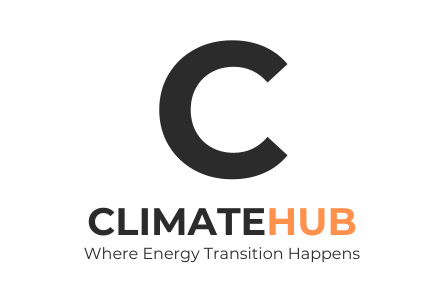- ClimateHub
- Posts
- ClimateHub Insights Newsletter #3
ClimateHub Insights Newsletter #3
What's up in the climate tech space
Hey! Welcome to the ClimateHub newsletter - your summary of what's happening inside the climate tech community, and how we are progressing to reach Net Zero in 2050. New to ClimateHub? Try out previous posts and our website.
STATE OF NATION
Winter is over, and we avoided the much-feared shortages of electricity or gas. The downward price trend of previous months has continued so far in March. Nevertheless, leaving aside the exorbitantly high prices observed during 2022, prices remain at historically high levels.
The global energy markets got hit by OPEC’s surprising decision its production quotas will be cut by approximately 4% (1.15 MB/d) from May (on top of the 0,5 MB/d cut previously announced by Russia). Oil prices recovered immediately to nearly USD 85/b.
Events in France in recent weeks have been rather a price supportive regarding the electricity prices in Europe. On 8 March, Electricité de France (EdF) announced the discovery of new corrosion areas potentially affecting all nuclear plants in France. Due to the strikes in France, it is unclear whether the nuclear reactors will be operational again soon following the maintenance works of the past 12 months.
CO2 emissions prices remain high, hovering at around EUR 95 per ton, as optimism in the financial markets persists.
INDUSTRY FOCUS - GRID
The electrical power grid is the most advanced engineering achievement of the XXth century. Millions of miles of power lines across the world connect remote power plants with people to provide steady and stable delivery of power. Although we still have places on Earth without access to power, global electrification did great strides in the last hundred years.
For the most of past 140 years, the electrical grid was being developed slowly but steadily. Although it's a well-functioning engineering artwork, there are challenges ahead.
Energy transition fundamentally shifts the operating model according to which the grid was designed. Electric vehicles, solar panels, smart thermostats, heat pumps, batteries, and data centers were not envisioned a century ago.
This poses a great opportunity for climate tech innovation. We see a number of solutions disrupting every stage of the grid life cycle - from planning, through operations and the ability to handle new market design and new business models. In our recent blog post, we made an overview of the angles & workflows in which the power grid ecosystem is being disrupted. Click here to see the overview.
INVESTMENTS & PARTNERSHIPS
SOLAR - Blue Origin has allegedly discovered how to transform moon dust into solar panels, which scientists have been attempting to achieve for years. The company has quietly announced the breakthrough, but it has the potential to be a significant game-changer, as it could enable the creation of lunar infrastructure that could ultimately help with future Mars missions. Blue Origin is reportedly seeking to collaborate with NASA on this technology.
VC - Venture capital funding for carbon and emissions technology startups totaled $13.8 billion in 2022, falling just short of the record-setting $14.1 billion in 2021. The sector's robust funding trend demonstrates strong investor interest, helping startups overcome a venture funding slump. The Inflation Reduction Act's supportive policy changes and organizations' aggressive emissions reduction targets are expected to drive investment in early-stage startups, according to Reuters.
CARBON - ExxonMobil said its Low Carbon business has the potential to generate hundreds of billions of dollars in revenue and outperform its traditional oil and gas business, according to the company. The new unit is anticipated to have a more stable profile than the cyclical oil and gas business. Exxon plans to spend $10 billion on cutting carbon emissions from its operations by 2027, focusing on carbon capture, hydrogen, and biofuels, which could be worth $6.5 trillion by 2050.
BATTERIES - Volkswagen has postponed its plan to construct a battery factory in Eastern Europe after predicting that it could receive up to €10B in U.S. incentives to construct a similar facility in North America under the Inflation Reduction Act. The automaker is waiting to observe how the EU would respond to the U.S.'s incentives before continuing in Eastern Europe. The postponement of building plans is the most recent effect of the Biden Administration's $369B IRA, which is attracting European businesses to the U.S.
CLIMATE TECH SOLUTION IN THE SPOTLIGHT

The world’s leading energy companies turn to AutoGrid to integrate all distributed energy resources, turn on new revenue streams and drive deeper engagement with their customers. Their suite of Energy Internet applications allows utilities, electricity retailers, renewable energy project developers, and energy service providers to deliver clean, affordable, and reliable energy in a distributed energy world.
Established at Stanford University in 2011, today AutoGrid has more than 6 GW of DERs under contract with Xcel Energy, National Grid, E.ON, CPS Energy, Total, NextEra Energy, and over 35 other leading energy companies around the world.
AutoGrid has been recognized for numerous prestigious industry awards including the Global Cleantech 100 (2019), Edison Awards (2018), Bloomberg New Energy Pioneer (2016), World Economic Forum Technology Pioneer (2015), Red Herring Top 100 North America (2015), Industrial Innovation Company of the Year by the Cleantech Group and Green Product of the Year by the BIG Awards for Business Programs.
AutoGrid offers a suite of software products for energy industry.
AutoGrid DERMS is the industry’s most comprehensive distributed energy resource management system (DERMS) application, connecting to and managing all types of distributed energy resources (DERs).
AutoGrid VPP (Virtual Power Plant) aggregates customer-owned flexible storage, distributed generation, and demand-side resources to monetize in multiple energy markets and turn them into cash generators.

